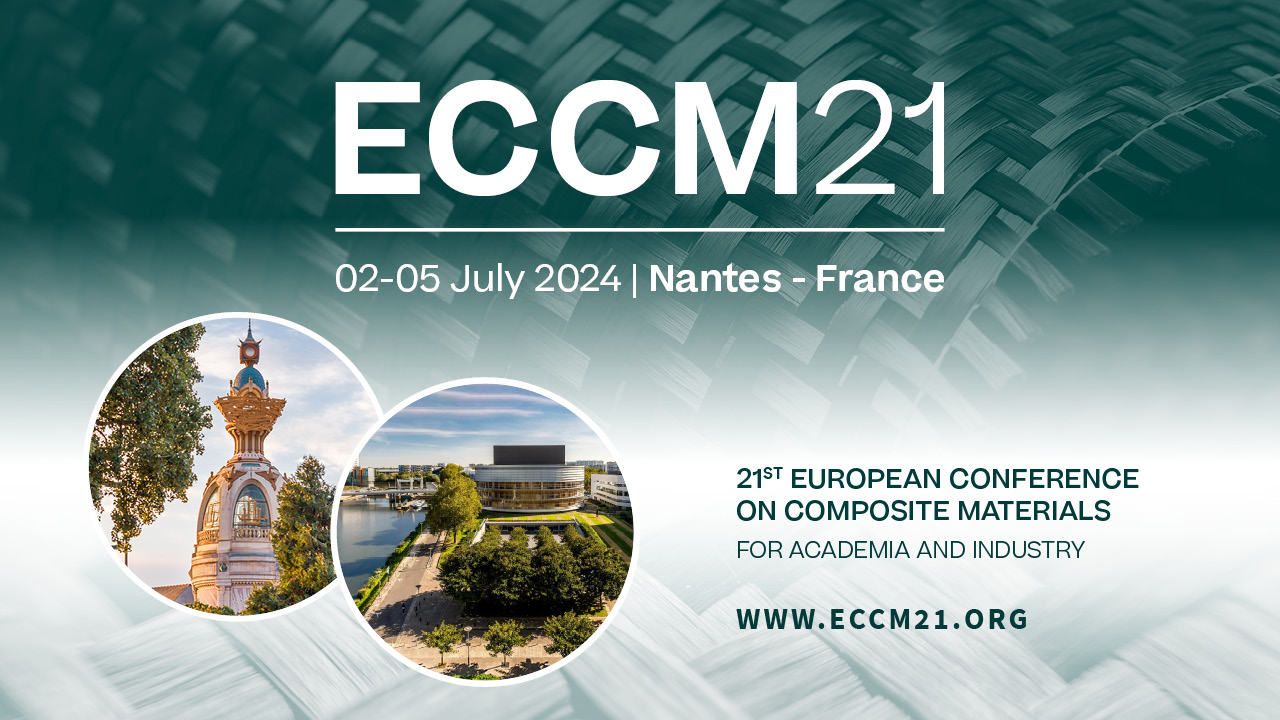The Consolidation of Rapid Laser Deconsolidated Composite Tapes
Topic(s) : Manufacturing
Co-authors :
Dave VAN WINDEN , Julie TEUWEN (NETHERLANDS), Daniël PEETERS (NETHERLANDS)Abstract :
Laser assisted fiber placement (LAFP) is a promising automated manufacturing technique that can be utilized to manufacture larger thermoplastic composite structural components. LAFP would allow for a decrease in manufacturing cycle times. The LAFP manufacturing quality is promising but there are still some unknowns.
Research on LAFP has shown that deconsolidation of thermoplastic composite tapes occurs during the rapid heating phase. During the increase in temperature, various mechanisms occur that change the micro- and meso-structure of the tapes. The observed deconsolidation forms are increase in thickness, surface roughness, void content and waviness. It was identified that the deconsolidation forms have a negative effect on the bond formation as intimate contact development is reduced. Experimental studies have shown that it is possible to resolve the deconsolidation of the tapes when pressure and temperature is applied for a considerable amount of time [1]. However, during LAFP, the time for re-consolidation is limited. This time limit is expected to have a negative influence on the consolidation quality. This work aims to acquire knowledge on the consolidation of rapid laser deconsolidated thermoplastic composite tapes by developing a novel experimental set up that can achieve LAFP-like process parameters and by analysing the produced specimens.
First, an experimental set-up that has the capability to achieve LAFP-like conditions had to be designed and built. Next, this set-up was used to investigate the effect of placement speed (in the range of 40 mm/s to 200 mm/s) and consolidation pressure (in the range of 160 kPa to 600kPa) on the rapid laser heating deconsolidation forms. Six different combinations were investigated on CF/PEEK UD tapes. Post placement roughness, degree of effective intimate contact, void content and thickness were characterized using microscopy.
The set-up that has been designed and constructed is capable of mimicking LAFP temperature and pressure histories. First the incoming tape is heated with a vertical-cavity surface-emitting laser, after which it moves through a shadow zone to be consolidated between a silicon roller and a moving tool surface that provides the linear placement movement. Deconsolidation resolution is dependent on the re-compaction of the fiber bed and flow of the matrix material. Both placement speed and pressure increase have shown to yield a positive effect on the resolution of deconsolidation. The reasons for this will be elaborated on in the full paper.
[1] Ozan Çelik, Tom Bussink, Daniël Peeters, Julie Teuwen, Clemens Dransfeld, The effect of Laser-Induced deconsolidation on the compaction behavior of thermoplastic composite tapes, Composites Part A: Applied Science and Manufacturing, Volume 151, 2021
Research on LAFP has shown that deconsolidation of thermoplastic composite tapes occurs during the rapid heating phase. During the increase in temperature, various mechanisms occur that change the micro- and meso-structure of the tapes. The observed deconsolidation forms are increase in thickness, surface roughness, void content and waviness. It was identified that the deconsolidation forms have a negative effect on the bond formation as intimate contact development is reduced. Experimental studies have shown that it is possible to resolve the deconsolidation of the tapes when pressure and temperature is applied for a considerable amount of time [1]. However, during LAFP, the time for re-consolidation is limited. This time limit is expected to have a negative influence on the consolidation quality. This work aims to acquire knowledge on the consolidation of rapid laser deconsolidated thermoplastic composite tapes by developing a novel experimental set up that can achieve LAFP-like process parameters and by analysing the produced specimens.
First, an experimental set-up that has the capability to achieve LAFP-like conditions had to be designed and built. Next, this set-up was used to investigate the effect of placement speed (in the range of 40 mm/s to 200 mm/s) and consolidation pressure (in the range of 160 kPa to 600kPa) on the rapid laser heating deconsolidation forms. Six different combinations were investigated on CF/PEEK UD tapes. Post placement roughness, degree of effective intimate contact, void content and thickness were characterized using microscopy.
The set-up that has been designed and constructed is capable of mimicking LAFP temperature and pressure histories. First the incoming tape is heated with a vertical-cavity surface-emitting laser, after which it moves through a shadow zone to be consolidated between a silicon roller and a moving tool surface that provides the linear placement movement. Deconsolidation resolution is dependent on the re-compaction of the fiber bed and flow of the matrix material. Both placement speed and pressure increase have shown to yield a positive effect on the resolution of deconsolidation. The reasons for this will be elaborated on in the full paper.
[1] Ozan Çelik, Tom Bussink, Daniël Peeters, Julie Teuwen, Clemens Dransfeld, The effect of Laser-Induced deconsolidation on the compaction behavior of thermoplastic composite tapes, Composites Part A: Applied Science and Manufacturing, Volume 151, 2021

